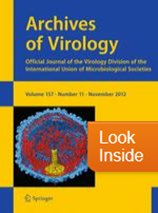Lipoteichoic acid (LTA) is a major virulence factor of Gram-positive bacteria including Staphylococcus aureus. Despite its pivotal role in causing sepsis, the systemic immune responses to LTA in human cells are poorly understood. Here, we produced highly-pure and structurally-intact LTA from S. aureus and examined the gene expression profile of LTA-stimulated human peripheral blood mononuclear cells (PBMCs). The LTA preparation did not contain any detectable biologically-active impurities and stimulated Toll-like receptor 2. Protein expression profiling using a cytokine array kit and ELISA revealed expression of MCP-1/CCL2, IL-6, and IL-1β. We performed transcriptional profiling of PBMCs in response to S. aureus LTA using an Affymetrix genechip microarray. A total of 208 genes were significantly (fold change>1.5 and P<0.05) altered, with 157 up-regulated and 51 down-regulated genes in response to S. aureus LTA treatment. The up-regulated genes were involved in recognition (30 genes), cellular adhesion (6 genes), signal transduction (42 genes), co-stimulation (4 genes), chemokines, cytokines and their receptors (51 genes), apoptosis (9 genes), and negative regulation (15 genes). The down-regulated genes were involved in recognition (12 genes), antigen processing and presentation (9 genes), signal transduction (27 genes), and chemotaxis (3 genes). The microarray results were validated using real-time RT-PCR with 21 up-regulated genes and 9 down-regulated genes. Our results provide a more comprehensive overview of the transcriptional changes in PBMCs in response to S. aureus LTA, and contribute to the understanding of the pathophysiological role of S. aureus LTA during the systemic inflammatory response.
Lipoteichoic acid (LTA) is a major virulence factor of Gram-positive bacteria including Staphylococcus aureus. Despite its pivotal role in causing sepsis, the systemic immune responses to LTA in human cells are poorly understood. Here, we produced highly-pure and structurally-intact LTA from S. aureus and examined the gene expression profile of LTA-stimul...
Lipoteichoic acid (LTA) is a major virulence factor of Gram-positive bacteria including Staphylococcus aureus. Despite its pivotal role in causing sepsis, the systemic immune responses to LTA in human cells are poorly understood. Here, we produced highly-pure and structurally-intact LTA from S. aureus and examined the gene expression profile of LTA-stimulated human peripheral blood mononuclear cells (PBMCs). The LTA preparation did not contain any detectable biologically-active impurities and stimulated Toll-like receptor 2. Protein expression profiling using a cytokine array kit and ELISA revealed expression of MCP-1/CCL2, IL-6, and IL-1β. We performed transcriptional profiling of PBMCs in response to S. aureus LTA using an Affymetrix genechip microarray. A total of 208 genes were significantly (fold change>1.5 and P<0.05) altered, with 157 up-regulated and 51 down-regulated genes in response to S. aureus LTA treatment. The up-regulated genes were involved in recognition (30 genes), cellular adhesion (6 genes), signal transduction (42 genes), co-stimulation (4 genes), chemokines, cytokines and their receptors (51 genes), apoptosis (9 genes), and negative regulation (15 genes). The down-regulated genes were involved in recognition (12 genes), antigen processing and presentation (9 genes), signal transduction (27 genes), and chemotaxis (3 genes). The microarray results were validated using real-time RT-PCR with 21 up-regulated genes and 9 down-regulated genes. Our results provide a more comprehensive overview of the transcriptional changes in PBMCs in response to S. aureus LTA, and contribute to the understanding of the pathophysiological role of S. aureus LTA during the systemic inflammatory response.



